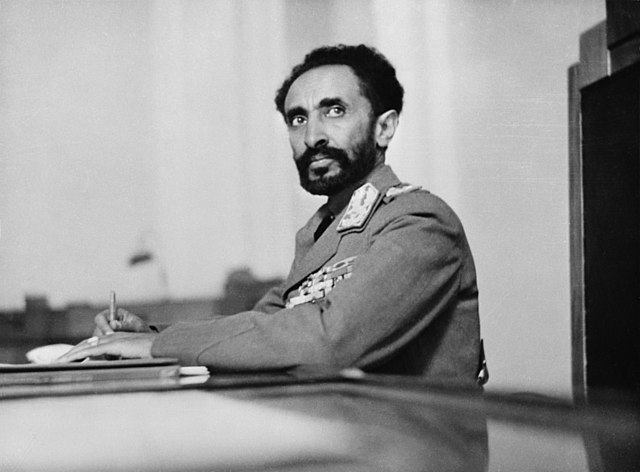Emperor Haile Selassie I was the last emperor of Ethiopia. He ruled the country between 1930 and 1974. Born Ras Tafari Makonnen, he took up the name Haile Selassie, meaning the Might of the Trinity, after he ascended to the throne.
During his reign, the emperor earned the admiration of many within and outside the country. Despite that, his reign was marred by the worst starvation crisis. Political dissatisfaction eventually led to his fall. Read more about Emperor Haile Selassie I’s achievements and failures.
Become an insider. Subscribe to our newsletter for more top trending stories like this!
By these books on Amazon and learn more about the history of Ethiopia
Successes of Emperor Haile Selassie I
Promoting Pan-Africanism
The former ruler of Ethiopia was a true believer in Pan-Africanism. He detested the involvement of foreign governments. During his tenure, he helped to start several organizations to bring African countries together.
He was one of the founders of the Organization of African Unity (OAU), now African Unity. It was formed in 1963 to promote unity, cooperation and the independence of African countries. He served as its first Chairman.
Additionally, Emperor Haile Selassie supported the liberation movements of other African countries. In his United Nations speech, he called for the end of colonialism and racial discrimination.
Buy anything from African-American culture you like on Amazon.
Modernizing Ethiopia
He played a crucial role in developing the country to what it is today. Selassie introduced Ethiopia’s first constitution in 1931 to centralize power under his leadership. He did this to enable him to fulfil his reform agenda across all levels of society: economic, political and social.
Additionally, his efforts to improve the health sector, infrastructure development, building the education system, and the abolition of slavery largely transformed Ethiopia. He did this to industrialize the country and reduce its dependence on foreign governments.
People Also Read: Must-Read Black Biographies in the World
Defeating the Italians
In 1936, Italy invaded Ethiopia. Although the League of Nations denounced Italy’s move, they didn’t provide much support. Emperor Haile Selassie I and his family were forced into Britain. There, he campaigned against Italians and called for an end to their attacks. Even then, Western countries refused to support him.
In 1939, Britain helped Selassie to drive the Italians out and in 1941, he went back to Ethiopia for the first time since the invasion. By 1942, Italians had left the country. However, the assistance he received from the British people dramatically changed things. This led to his eventual downfall.
Join our Spotcovery Global Black Community Facebook Group for early access to exclusive content and to share in a lively discussion.
Failures of Emperor Haile Selassie
Autocratic State
Much of Haile Selassie’s woes stemmed from the Italian occupation. He believed that Britain wanted to help the rebuilding process as a way of gaining control of his country. As a result, Selassie scaled back on his ambition to modernize Ethiopia. Instead, he isolated it from the rest of the world and centralized more power under him.’
Become an insider. Subscribe to our newsletter for more top trending stories like this!
People Also Read: 10 Black Male Influencers to Follow Right Now
Famine and Starvation
With the political change in Ethiopia after 1936, the country was hit with severe famine between 1972 and 1974. According to reports, about 200,000 people lost their lives. This famine wasn’t purely due to natural causes.
Haile Selassie’s government didn’t take the necessary measures to stop the drought. Due to his relations with international aid organizations, he convinced them not to pay attention to information coming out of Tigre and Wollo provinces.
People Also Read: 4 Dramatic Events That Happened on October 20th
Political Dissatisfaction That Led to a Coup Detat
Political discord grew in Ethiopia. In 1960, Haile Selassie survived a coup attempt. He was in Brazil when the military tried to overthrow him, but on his return, he quashed the coup. The country was falling apart with poor living conditions and hyperinflation.
The resistance toward his leadership grew among the population. In 1974, the Derg arrested and imprisoned Haile Selassie took over power and announced the end of the empire. Selassie died in 1975.
Emperor Haile Selassie I was the last true African political leader to rule over an empire. Despite his ambitious plans to revolutionize Ethiopia, he fell short after the Italian invasion. His desire to resist foreign help turned him into an autocratic leader.
Consequently, thousands of Ethiopians suffered under his regime. Eventually, Haile Selassie couldn’t keep up and was deposed. For a man who’d given so much to his country, it’s unfortunate that he’s largely remembered for the devastation he caused.
Learn more about black history by buying these books on Amazon.
Nearly 80% of consumers visit directories with reviews to find a local business. List your business for free in our exclusive Spotcovery Black-Owned Business Directory.
Spotcovery offers unique and fresh daily content on Black culture, lifestyle, and experiences. We talk about everything black, black people, black-owned and black-owned businesses. We also deliver authentic and relevant content that will inform, inspire, and empower you! The future of black media is critical to today’s black experience! Our primary audience includes African Americans, Africans, Afro-Caribbean, and people of African heritage. Black culture is for the culture!
Become an insider. Subscribe to our newsletter for more top trending stories like this!





